Technical Data Small size conveyor chain Handling
Free flow chain Precautions for use
1. Double Plus Free Flow Chains (Common with Double Plus Chain with Snap Cover )
- (1)Recommended conveyor length is 15 m or less.
- (2)Avoid using a chain with engineering plastic rollers in an environment where it will be exposed to oil or water. (Use in such an environment may cause the double-speed capability to deteriorate. )
- (3)Use caution not to drop pallets or conveyed objects on the chain and avoid any operation that may expose the chain to impact and pressure by pressing it down.
- (4)Double-Plus chain with plastic rollers should be used without lubrication. If the expected lifetime is not satisfied, please consider Lambda series.
- (5)Steel rollers must be lubricated to prevent an abnormal increase in the coefficient of friction.
If unusual noise occurs at the sprocket articulation section or between the large and small rollers of the conveyor section due to aging, lubricate with SAE 10 to 20 oil between the pin and bush and between the large and small rollers. Lubrication should be done with a spray or brush, etc., so that the oil reaches the point where lubrication is necessary. If the transfer of oil to the material being conveyed causes a problem, wipe off the oil on the outer circumference of the rollers.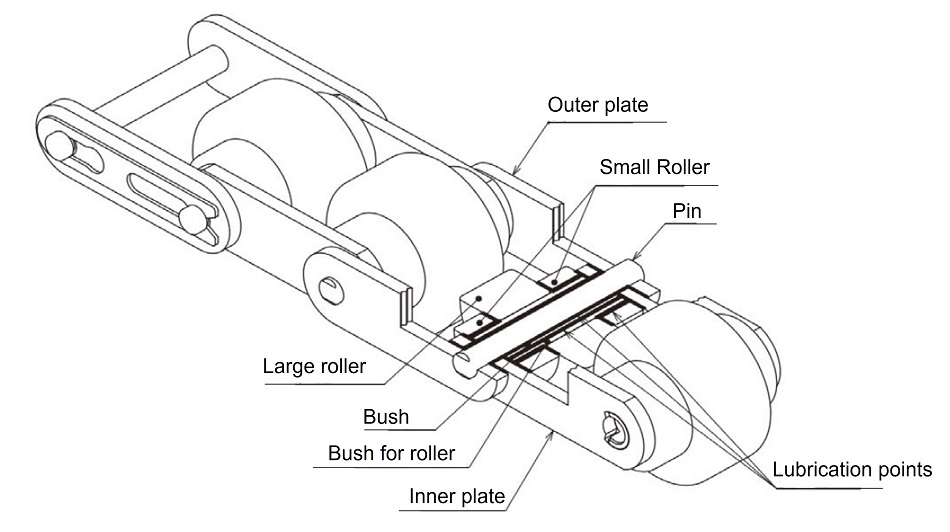
Since the lambda series can suppress unusual noise between pin and bush, please consider using it in areas where lubrication is not possible or where lubrication is not desired.
- (6)Finishing the Ends on the Conveying Side
Put a chamfer on the ends of the upper rail that the chain’s small rollers travel on.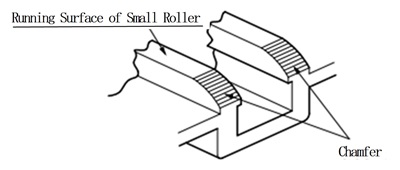
- (7)Large Roller Support
It is possible to prevent the chain’s large roller from dipping at the chamfered portion by installing a support for the large roller on the ends of the rail on the driven side.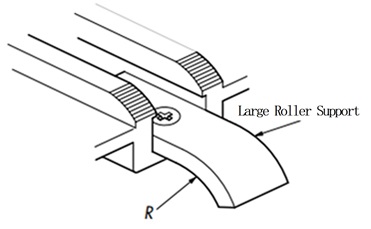
-
(8)Transferring Objects Between Conveyors (straight line transfer )
To convey pallets in a stable condition at the transfer portion of the conveyor, install a roller between the two conveyors or the shafts of sprockets.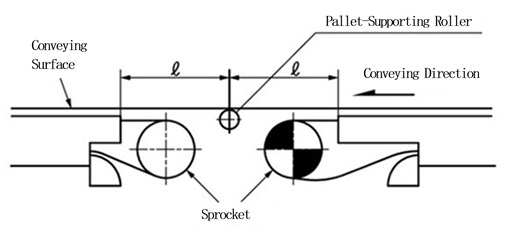
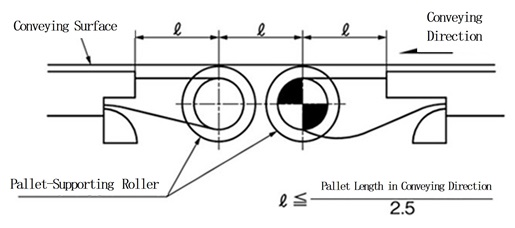
-
(9)Take-Up (1)
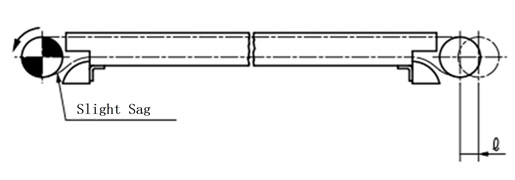
Take-up amount ℓ = Chain pitch × 2 + Leeway length
Allow for a little sag up to 10% of span on the chain under the drive-side sprocket during operation.
When the amount of sagging increases, adjust the take-up or cut the chain.
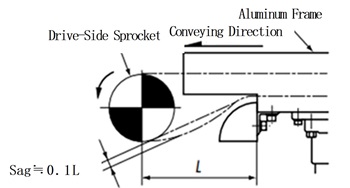
Chain Sag
Units :mm Size Normal Sag Max. Sag RF2030 25 75 RF2040 35 105 RF2050 40 120 RF2060 50 150 RF2080 65 190 The sag in the table above is given on the basis of the double plus conveyor chain design.
-
(10)Take-Up (2)
Where take-up configuration shown above is not allowed because of the presence of conveyors, design the take-up configuration referring to the diagram below.
With Double Plus Chain with snap cover, make the dimension *R larger than the dimension R of the return guide (see the dimensional diagram).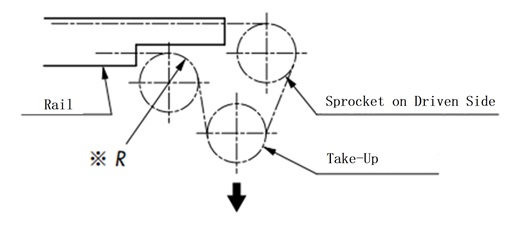
-
(11)Sprocket and Shaft
Drive sprocket ...Should be keyed, with both left and right sprockets aligned.
Take-up sprocket ...Should be keyless (free), with separate shafts on the left and right sprockets.
Other sprockets ...Keyless (free)
⚠ If a conveyed object is placed directly on the chain, the large roller may leave a mark on the conveyed object.
*RF2030VRPUA and RF2030VRPUB (urethane-lined rollers) are designed so that the large roller is less likely to leave a mark on conveyed objects.
2. Double Plus Snap Cover Chain
- (1)Handle the chain with care, as the snap cover is made of engineering plastic.
- (2)There are two types of snap covers; one for the outer link and another for the inner link. Use caution to avoid installing the wrong type of snap cover. (See the diagram below. )
(The snap cover is fitted on the chain at time of shipment. )
For Outer Link

For Inner Link
- (3)When connecting chains, connect them via special connecting link and then fit the snap cover for the outer link correctly at the notch of the plate. (See the diagram below. )

- (4)If a snap cover is damaged in handling, replace it with a new snap cover.

